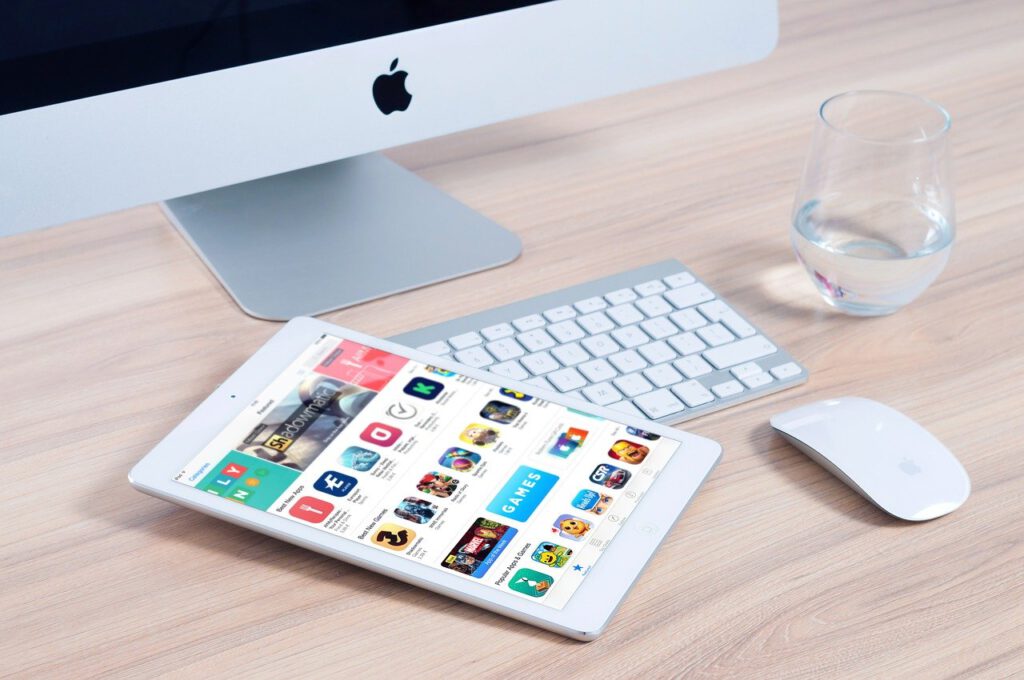One of the biggest challenges mobile app creators face is actually getting people to pay for their apps. Sure, developing an app, delivering value to people through this app is cool, but the reason why most of you have built an app is to make money.
Now analyze: Is your app bringing money? Is it bringing enough money? Is it bringing money constantly or from time to time?
If you’ve realized that your app’s revenue numbers are not as great as you wish them to be, then it’s time to reconsider what you’re doing. In this article, we’ll share what needs to be done to increase in-app purchases.
Encourage website visitors to download your app
One of the first steps you should take in order to boost in-app purchases is to increase app downloads. The logic behind this is simple: the more downloads your app will have, the more people will use your app and the greater chance you have of them making purchases.
The simplest way to do that is to target people who are already familiar with your brand – your website visitors. So you need to make sure your website is designed so that users are encouraged to download the app from your website.
Tell the audience about your app first. Just remember that customers are not interested in the features of your app. Instead, let them know about the benefits these features bring.
You can also post a demo video that allows users to quickly see the app’s value proposition and introduces the user interface.
Add clear call-to-action buttons
Call-to-actions are used to trigger users to do something you want them to – making an in-app purchase, in our case. Just keep in mind that the CTA should entice users to make a certain action. It’s all about being clear and concise as well as getting straight to the point.
Use push notifications (appropriately!)
Push notifications are a great way to reach users who already have your app downloaded to their devices and promote various campaigns, discounts, special offerings, etc. However, if used incorrectly, push notifications will do more harm than good. In fact, there are two main things about push notifications you need to keep in mind: time and value.
Time. Sending these out too often can be annoying, which might make users want to mute your notifications or even delete the app. This is obviously not what you’re trying to achieve here.
Value. Push notifications should always be relevant and provide information that users can act on. So it’s important to make sure that all of your push notifications add value. Messages like ‘Hey, we just wanted to say hello!’ can be distracting and annoying. There’s no value here.
Once you’ve packaged the notifications in a proper way then you will significantly increase your chances to boost in-app purchases.
Set the right prices
Prices for your in-app purchases are a crucial factor for your strategy. Finding the right price will attract more users to buy and maximize your revenues.
People are prone to psychological biases when validating prices. Users judge prices primarily by the first digit. So they perceive $9.99 as much more beneficial than $10, although the difference is just one cent.
When planning your pricing strategy, keep in mind these psychological barriers and set prices for in-app purchases slightly below numbers ending on nil, for instance, $10, $20, $30, and so on. For example, go for $9.99, $20.99, etc. You could also use a tool like the Van Westendorp Price Sensitivity Meter to really get a good idea what people would consider a fair price for this particular product.
Besides the psychological price barriers, users also have individual price sensitivities. Based on their spending behavior and personal financial limitations, they might avoid buying items above a certain price. That’s why you should offer packages with various pricing options so that users with different price sensitives can afford buying from you. Just remember that the more expensive a package is, the higher value it should provide.
For some users, additional benefits of mid- and high-value packages will be obvious. But many users will not even spend time calculating which one of the packages offers the best value. That’s why it’s essential to communicate each package’s value as explicitly as possible so that users understand the benefits at first glance.
Let users enjoy premium content without paying
There will always be users who will doubt the benefits of your premium content. To prove its worth, give them a chance to test these benefits themselves. Once users grasp the value of premium content or features, some of them will be ready to pay money for it.
Find a proper balance here – give users free samples to let them learn more about the premium’s benefits but make sure there is a shortage in the long term that users can overcome only by making in-app purchases.
Final word
Before introducing any of these tips into practice, analyze your users’ attitude towards your app first. Proper tracking of user data can deliver actionable insights that can not only boost in-app purchases, but improve app retention and engagement. On this front, if you do not have an in-house development team, partnering with firms that provide iOS App Development Services (as well as app development for other platforms) and keeping in constant communication with them can be beneficial. Collaboration with a development team can help you change or update features and functionalities as you gain more insights on how users engage with your app.
Although there’s no universal answer to boosting in-app purchases once and for all, we’ve pulled up the most common ways to do it. Hopefully, they’ll inspire you to experiment and build your own strategy in order to achieve your revenue goals.

 by Carl Bunton 5 years ago
by Carl Bunton 5 years ago 